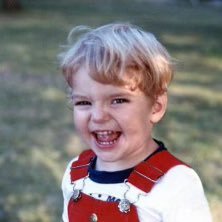Thomas 'Precision Tom' Ciszek
2025 Palantir American Tech Fellow • Ex‑Amazon Robotics
Building next-generation robotics manufacturing systems and supply chain AI that transforms how complex hardware gets designed, sourced, and delivered.
Applying advanced operations research and information architecture to create intelligent systems that bridge the gap between digital planning and physical production.

2025 Palantir American Tech Fellow and Ex‑Amazon Robotics. I specialize in robotics manufacturing and in clear to build supply chain AI, and in Operations Research. My work combines advanced robotics systems with optimization techniques to improve operational efficiency and automation in complex environments.
Professional Background
- Amazon Robotics: Quality management system and supplier scorecard initiatives that improved fulfillment robotics reliability and throughput
- Twitter: Scaled advertising video ML infrastructure for real-time content recommendations serving 200M+ daily active users
- Bird: Built operations research models for fleet optimization, improving unit economics and vehicle utilization rates
- Brain Corp: Advanced autonomous navigation systems for commercial floor-cleaning robots deployed across major retail chains
- Palantir American Tech Fellow 2025: Selected for elite fellowship program focused on deploying advanced data integration platforms for defense and critical infrastructure
- Catholic Social Ventures: Building technology platforms that advance Catholic social teaching through scalable digital solutions for faith-based organizations
Information Science Insights
Exploring advances in digital knowledge organization and operations research
Professional Experience
Former roles at Amazon Robotics developing next-gen fulfillment systems, Twitter scaling ML infrastructure, Bird optimizing fleet operations, and Brain Corp advancing autonomous robotics
Information Systems & Operations Research
Applying operations research methodologies to improve information architecture and knowledge management systems.
Advanced Annotation Systems
Structured approaches to transform unstructured data into accessible knowledge with effective taxonomy development.
System Optimization
Mathematical and computational approaches to streamline processes and identify efficiency improvements.
Knowledge Integration
Methods for connecting disparate information systems to create unified, accessible knowledge platforms.
Implementation Approach
Information Analysis
Assessment of information flows and knowledge requirements
System Design
Development of optimized information architecture and workflow
Implementation
Integration with feedback mechanisms for continuous improvement
Price-to-Part Theory in Manufacturing
A framework examining the relationship between part count, complexity, and manufacturing costs.
Price-to-Part Relationship
Each part contributes both direct costs (material, assembly) and indirect costs (quality assurance, logistics, potential failure points).
As part counts increase, total costs grow non-linearly due to these compounding factors.
Complexity Considerations
Part complexity can be measured across multiple dimensions including geometric design, functional requirements, and material specifications. Higher complexity generally amplifies the costs associated with manufacturing and handling each part.
Applications
Design for Manufacturing
Consolidating multiple components into single parts or modules.
Cost Optimization
Targeted reductions in geometric, functional, or material complexity.
Automation Assessment
Evaluating complexity to determine automation feasibility.
Supply Chain Simplification
Reducing parts to simplify procurement and inventory systems.
Case Study: Automotive Manufacturing
Traditional vehicles can contain over 30,000 parts, each with its own costs. Modern manufacturing approaches like large-scale casting can consolidate numerous components, reducing part count and associated complexity.
This leads to lower total costs, reduced assembly time, and fewer potential failure points.
Featured Projects
Ad plenam felicitatem: cognoscere, amare, laudare, revereri, servire Deo.
Toward perfect happiness: to know, to love, to praise, to revere, to serve God.
☧